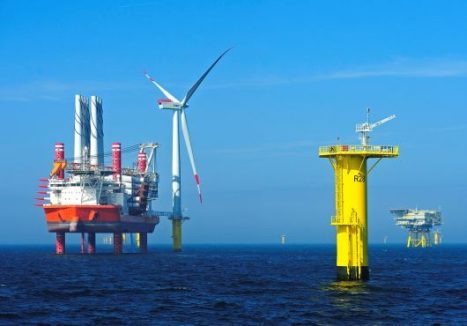A research programme which brings together academia and industry to address renewable energy challenges has delivered benefits topping an estimated £200 million.
The Technology and Innovation Centre Low Carbon Power and Energy Programme links the University of Strathclyde’s technical expertise to the low carbon energy sector and is funded by ScottishPower, SSE and Wood.
The programme, which started in 2013, demonstrates how different sectors can work together on key industry challenges. The results of the first phase have been independently assessed as having the potential to deliver a net cumulative benefit of £200 million, from a total budget of just £3.72 million.
It focused on reducing the costs and risks associated with both onshore and offshore wind projects and included 13 research projects. The scheme was renewed in 2018 for three years to find ways to make more efficient use of energy resources, with a further £1.8 million funding.
Spearheaded by the Department of Electronic and Electrical Engineering (EEE), the programme also links with colleagues across the engineering faculty including marine, mechanical and civil engineering.
Strathclyde’s Management Science department have also taken a prominent role and worked closely with engineering colleagues to deliver impact.
Professor Stephen McArthur, Deputy Associate Principal at Strathclyde, said: “The programme has focused on transferring low carbon innovations generated at the University into new tools and capabilities for our industrial partners.
“It aims to unlock new revenue streams for existing wind farms, as well as reducing the cost of installations at offshore wind farms by better understanding the logistics involved.
“Many of the outputs have led to significant improvements nationally, including the more efficient running of both onshore and offshore wind farms.
“Achieving successful outcomes from this joint collaboration, across such a wide range of projects, is truly unique and something we are very proud of.
“It’s an excellent example of how academia and industry can successfully collaborate and develop truly innovative projects aimed at tackling key industry challenges.”
One project has involved frequency response from wind farms, which can continuously change their output to help supply match demand on a second-to-second basis, vital to maintain the frequency of the National Grid.
A system developed by Strathclyde ensures that the National Grid can be kept informed of wind farms capability and that ensures they can feed into the market, worth £100 million a year.
Professor Stuart Galloway, said: “By working closely with the various engineering teams we have been able to bring our research expertise to a range of operational projects across the programme. ”
Another project which monitors the condition of wind turbines and provides technical information, helps reduce waste and supports local operations and maintenance jobs, as well as allowing continued generation of electricity.
For every year of extended life, there is a potential £18 million saving through income generated by the wind farm, with a target of 20 years.
The initiative is also making it cheaper to install turbines in the sea by using data to make the decision when it’s best to send out boats to the turbines.
SSE has already adopted the simulation and optimisation tool at one wind farm, with another three in progress, which allows it to work out the most cost effective time to send out vessels. It has estimated that on a single project, the tool will save around £13 million.
James Bowers, Engineering Manager in Technology at SSE, said: “SSE continues to find value from this collaborative partnership in providing solutions and insight for a variety of industry wide challenges related to project development and asset management.
“We look forward to continuing this successful collaboration in future and solving some of the key challenges arising in this ever changing industry.”
Barry Carruthers, Head of Innovation, Sustainability & Quality at ScottishPower, said: “ScottishPower truly values the collaboration and innovation inherent in the Low Carbon Power and Energy Programme. Real challenges are met with new insights and solutions which are developed and deployed in order to help us all deliver affordable, low carbon energy systems.
“The Programme partners continually show how industry and academia can collaborate to find answers to the challenges of both today, and tomorrow.”
Alan Mortimer, Director of Innovation within clean energy at Wood, said: “The TIC LCPE programme is working well and demonstrates the power of an effective collaboration between academia and industry to deliver innovative solutions which are pragmatic and create value.
“The programme is providing genuine advances which are essential to meeting the challenges of decarbonising our energy systems.”
The initiative has been shortlisted in the Energy and Environment category in the Engineer ‘Collaborate to Innovate’ awards.










